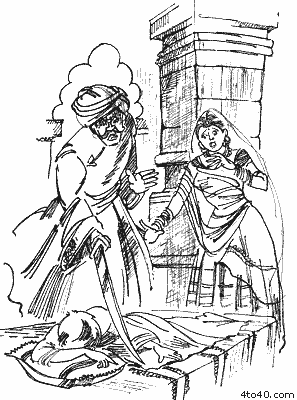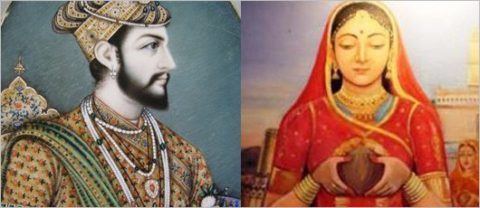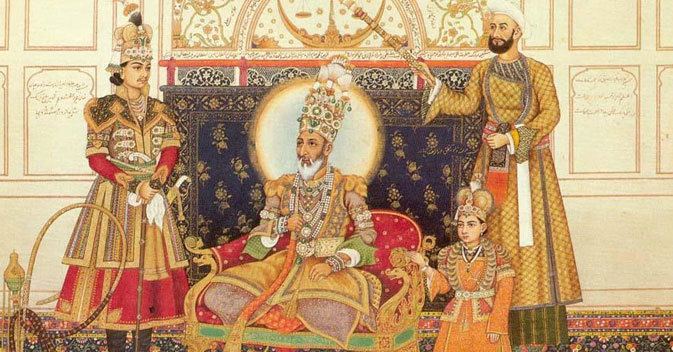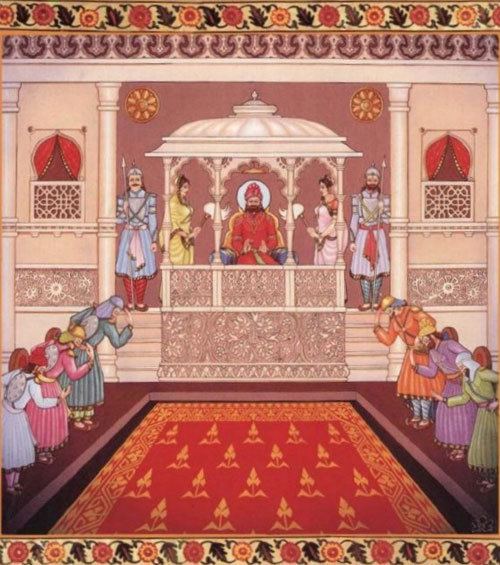Name Rani Karnavati | ||
 | ||
Children Udai Singh II, Vikramaditya Singh Great grandchildren Amar Singh I, Kunwar Durjan Singh Similar People Rana Sanga, Maharana Pratap, Udai Singh II, Rani Padmini, Maharani Jaiwanta Bai | ||
Rani karnavati ties rakhi to humayun makes him brother
Rani Karnavati (died 8 March 1535), was a princess and temporary ruler from Bundi, India. She was married to Rana Sanga of Chittorgarh, the capital of Mewar Kingdom. She was the mother of the next two Ranas, Rana Vikramaditya and Rana Uday Singh, and grandmother of the legendary Maharana Pratap. She served as regent during the minority of her son, from 1527 until 1533.
Contents
- Rani karnavati ties rakhi to humayun makes him brother
- Rani Karnavatis Majesty LHB Karnavati Superfast Express with WAP5 at Bagwada WAP4 at Udvada
- Biography
- References

Rani Karnavati's Majesty : LHB Karnavati Superfast Express with WAP5 at Bagwada + WAP4 at Udvada
Biography

After Babur had captured the throne of Delhi in 1526 AD, Rana Sangram Singh or Rana Sanga of Mewar lead a confederation of Rajput Kings against Babur to capture the throne of Delhi. But in The Battle of Khanua in 1527, the combined Hindu forces were defeated, and Rana Sanga died shortly afterwards from his wounds.
Rani Karnavati took up the regency in the name of her elder son Vikramaditya, a weak ruler. In the meantime, Mewar was attacked for the second time by Bahadur Shah of Gujarat, at whose hands Vikramaditya had earlier received a defeat. It was a matter of great concern for Rani.

The antagonized nobles were not ready to fight for Vikramaditya and the imminent battle was sure to be another blot in the history of Sisodias. Rani Karnavati wrote to the nobles to come forward for the sake of the honour of the Sisodias, and was able to persuade the nobles to fight for Mewar, if not for Vikramaditya. Their sole condition was that Vikramaditya and Uday Singh should go to Bundi during the war for their personal safety. Rani also sent a Rakhi to Mughal Emperor Humayun, calling him a brother and asking for help. Thus her name became irrevocably linked to the festival of Raksha Bandhan.

Rani Karnavati agreed to send her sons to Bundi and told her trusted maid Panna Dai to accompany them and take good care of them. Panna was reluctant, but surrendered to the wishes of the queen, when she assured her that with the renewed support of the nobles and the expected help from Humayun, all would be well. However, tidings from Chittor were not good and the Sisodias had fought valiantly, but they were outnumbered and the war was lost. Humayun who was on Bengal's invasion responded graciously and assured his assistance to Rani Karnawati, which could make Rajputs favorable towards Mughals, he left the Bengal expedition mid way but he could not reach chittor on time . Bahadur Shah entered Chittorgarh and ransacked it for the second time. Realising that defeat was imminent, Karnavati and the other noble ladies of the court immolated themselves in a mass suicide by fire known as Jauhar on March 8, 1535 A.D., while all the men donned saffron clothes and went out to fight to the death and thus committed saka. This is the occasion for the second of the three Jauhars performed at Chittor.. Humayun though late , later installed Sangram Singh's Son Vikramadiya Singh as ruler of Mewar and avenged the death of Karnavati by capturing Mandu from Bahadur Shah in 1535.

